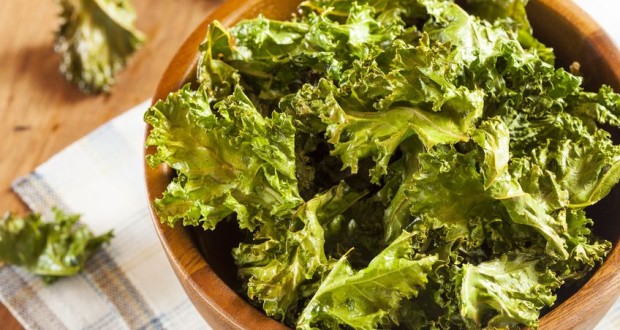It’s hard to think of an item more synonymous with snack foods than potato chips. Since their creation in the mid-19th century (yes, potato chips were first created all the way back in 1853), these crunchy potato slices have enjoyed a meteoric rise in popularity, to the point where Americans spent nearly $7 billion dollars on them in 2010 alone. When markets from all over the world are factored into the equation, this figure swells to a stunning $15 billion.
Of course, just because a food is popular doesn’t mean it’s good for the body; if fact, the inverse is often the case. Potato chips certainly do not buck this trend, as they are brimming with unhealthy ingredients like saturated fat, trans fats, cholesterol and salt. Eating a bowl of chips also loads up the body with empty calories; just one small bag of potato chips adds 150 calories to your diet with little accompanying nutritional value. The combined effect of these harmful components takes a very heavy toll on the body; a 2011 Harvard University study found that potato chips were the main culprit behind weight gain, outdoing even notoriously unhealthy fare like ice cream and soda.
While the health risks of chips are generally understood by the average consumer, giving them up cold turkey is no easy task. Many of the same ingredients that make potato chips so fattening also make them very alluring to the taste buds. Fortunately, there are healthy alternatives to chips that are still rich in taste and flavor. If the consequences of your chip-munching habit are starting to show up on your waistline, the proceeding list of substitutes can help reverse the damage from your poor dietary choices.
Kale Chips – It might be hard to picture kale, a dark leafy green plant, qualifying as an adequate replacement for potato chips. When baked for 10 to 15 minutes, however, kale takes on a much more crispy texture. Though it may not get the attention as some other kinds of veggies, kale is a bona fide nutritional powerhouse, packing large quantities of vitamin A, calcium, iron and sulfur.
For added taste (without much added calories), cover your kale chips with some olive oil, salt and pepper. Before seasoning the kale and putting it into the oven, remember to tear it up into small pieces. The oven’s heat will morph these leafy kale pieces into crunchy kale chips. Preheat and cook this snack at 360 degrees Fahrenheit.
Sweet Potato Chips – It can be argued that sweet potatoes, rich in vitamins C, B6 and D, are nutritionally superior to common white potatoes. These root vegetables can also be sliced up into thin circles and baked into chips. Simply lay the sweet potato slices onto a baking sheet, coat them judiciously with olive oil and salt and proceed to bake them for 20 to 25 minutes. To obtain the best possible results, your oven should be set at 400 degrees Fahrenheit.
Eggplant Chips – In addition to such well known nutrients as vitamins D, A and C, the body requires a steady input of fiber in order to function at optimal capacity. Unfortunately, the diets of many people are deficient in dietary fiber, contributing to health problems like constipation, weight gain, blood sugar spikes and fatigue. Adding eggplant to your diet via eggplant chips can help prevent such problems, as 1 cup of raw eggplant contains 11% of the fiber you need daily.
Recipes for eggplant chips often feature such seasonings as garlic, salt, pepper and parsley. A reasonable amount of parmesan cheese can also be thrown into the mix. Preheat your oven to 200 degrees Celsius (or 400 degrees for those partial to the Fahrenheit system) and place the eggplant slices on a baking tray before cooking for 25 to 30 minutes.
Beet Root Chips – One can be forgiven for avoiding beets to their strange appearance. These glaringly purple root veggies exhibit long stalks and roots shaped like Christmas ornaments. These quirky characteristics, odd as they may seem, shouldn’t dissuade consumers from giving beets a try. One cup of raw beets provides the body with 15% of its daily value (DV) of fiber, 11% DV of vitamin C, 13% DV of potassium, 22% DV of manganese and an impressive 37% DV of folate.
As with the other chip alternatives on this list, you don’t need to be expert chef to prepare beet root chips. First, use a peeler to remove the skin from the beets. After preheating your oven to 180 degrees Celsius (about 360 degrees Fahrenheit), simply cut up a beet and place its slices along a baking tray (remember to use a liner on the tray). Cover the beet pieces with a layer of foil; this will ensure that the slices don’t fold onto themselves while in the oven. It should take between 20 and 30 minutes for the beet chips to be fully cooked. Before placing them in the oven, you can season the beet slices with olive oil; this can be accomplished with the use of a cooking brush.
Apple Chips – One of the few chip alternatives derived from a fruit, apple slices have a relatively sweet taste. After setting the oven to 200 degrees Fahrenheit, place a piece of parchment paper onto a baking tray. Cut a single apple into slices about 1/8” thick and place them on the tray, making sure to remove any seeds from your slices. Cinnamon sugar can be added to the soon-to-chips, provided that you use a limited amount; a good rule of thumb is to use ½ teaspoon of cinnamon sugar per every 30 to 40 cookies. Those especially wary of sugar can use regular cinnamon instead.
Since both sides of apple chips need to be baked, it will take a good amount of time before your chips are ready to eat. The top side should take about 25 to 30 minutes to bake, while the opposite side will need another 30 minutes in the oven. Even after all of this baking, your apple chips will still initially seem somewhat soft and flexible, though they should adopt a more crispy texture after a few minutes or so.
 Natural Knowledge 24/7 Educate yourself with nutrition, health and fitness knowledge.
Natural Knowledge 24/7 Educate yourself with nutrition, health and fitness knowledge.






